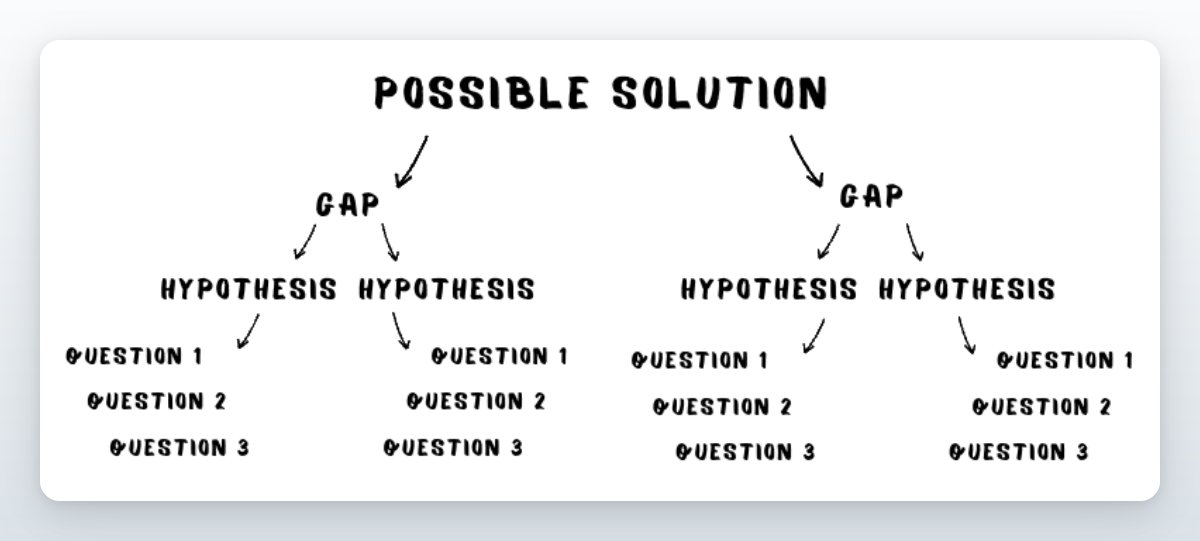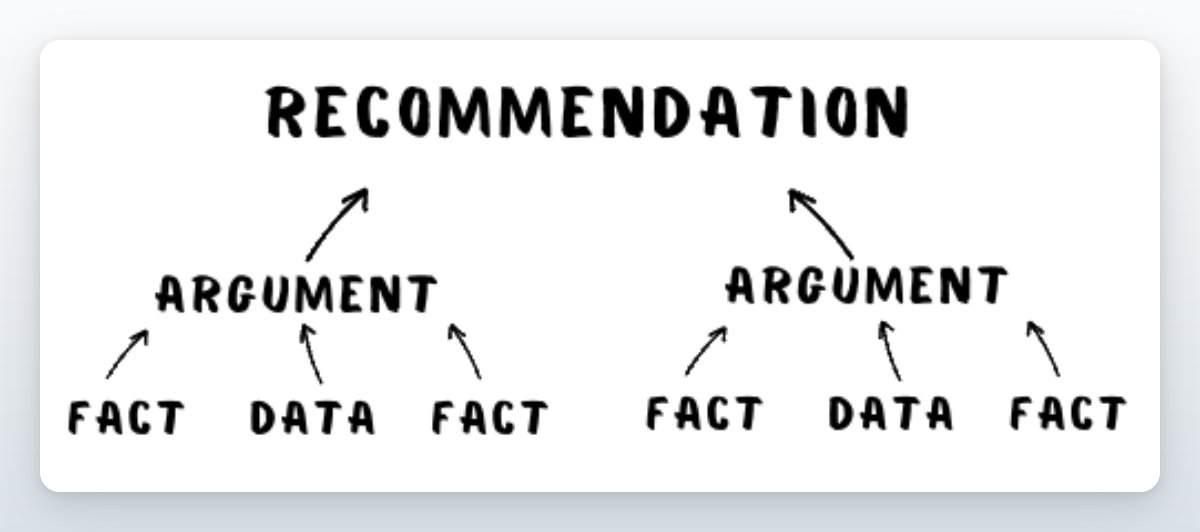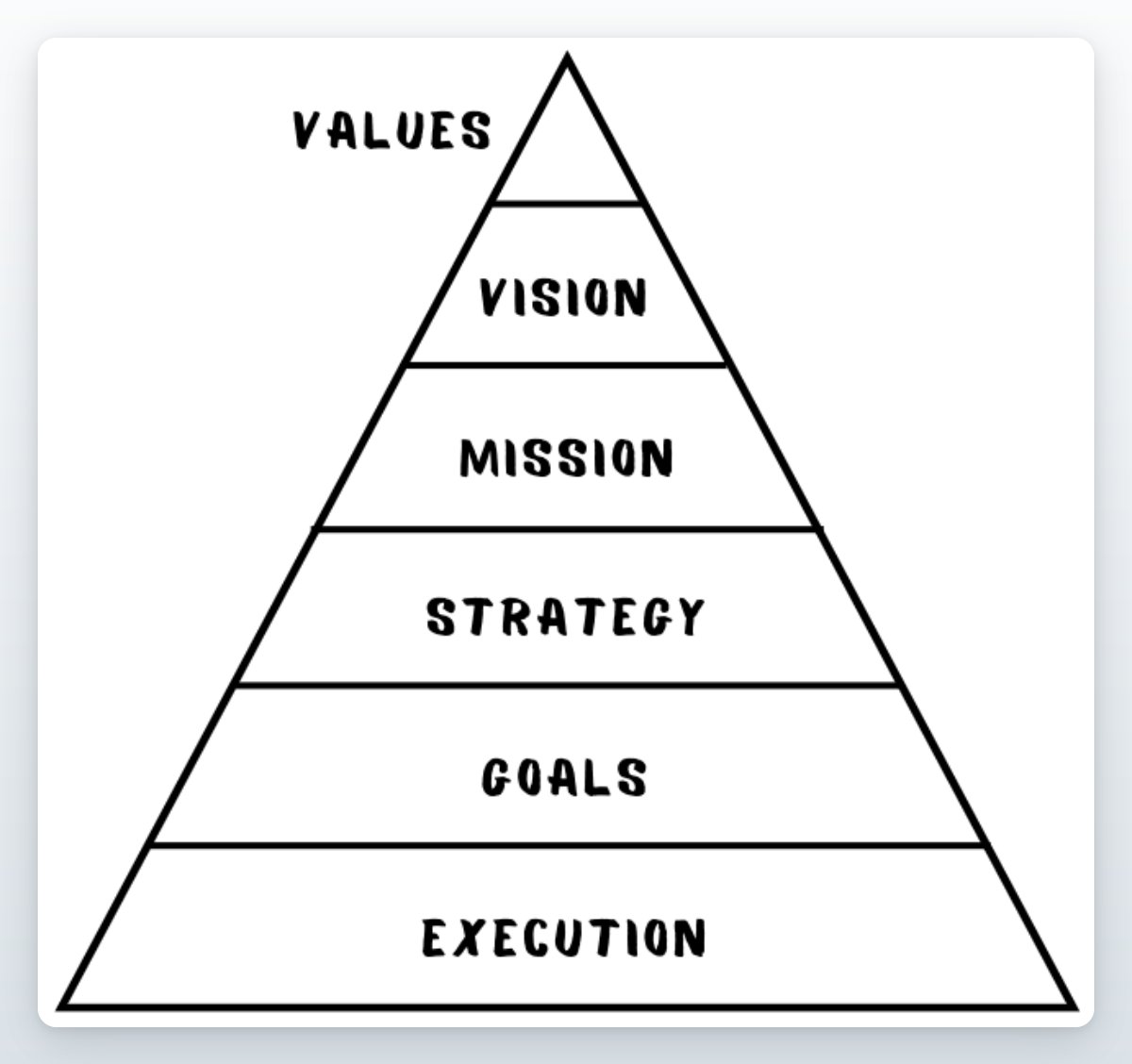
Most companies suck at solving problems
So they pay McKinsey $500K+ to do it for them
Here’s their 7-step problem-solving framework (for free):
So they pay McKinsey $500K+ to do it for them
Here’s their 7-step problem-solving framework (for free):
1) Define the problem
Take the time to clearly describe the issue:
• Know your audience
• Be as specific as possible
• Know what success looks like
• Is 80/20 enough, or do you need a perfect answer?
• Define boundaries & constraints (time, scope, people)
Take the time to clearly describe the issue:
• Know your audience
• Be as specific as possible
• Know what success looks like
• Is 80/20 enough, or do you need a perfect answer?
• Define boundaries & constraints (time, scope, people)

2) Break it down 1/2
Next, identify possible paths to a solution.
• List the possible causes of the problem
• Brainstorm solutions to (parts of) the problem
• Find all the assumptions in your solutions (gaps)
You have now identified what you need to find out.
Next, identify possible paths to a solution.
• List the possible causes of the problem
• Brainstorm solutions to (parts of) the problem
• Find all the assumptions in your solutions (gaps)
You have now identified what you need to find out.

2) Break it down 2/2
Structure your approach with a hypothesis tree:
• Take the gaps you identified
• Form hypotheses of how to close the gaps
• Break hypotheses down into questions to answer
Make sure nothing overlaps, while not missing anything.
Structure your approach with a hypothesis tree:
• Take the gaps you identified
• Form hypotheses of how to close the gaps
• Break hypotheses down into questions to answer
Make sure nothing overlaps, while not missing anything.

3) Prioritize
Set priorities by plotting the solutions in a matrix:
• Prioritize high ability to influence & high impact
• Consider something valuable & hard (top left)
• Try some quick wins (bottom right)
• Don't waste time on bottom left
Optimize for impact & results!
Set priorities by plotting the solutions in a matrix:
• Prioritize high ability to influence & high impact
• Consider something valuable & hard (top left)
• Try some quick wins (bottom right)
• Don't waste time on bottom left
Optimize for impact & results!

4) Plan
Sketch out all steps to take:
• Identify research methods & sources
• Set a timeline & expectations
• Think who could help you
Always keep the outcome in mind:
If you stopped now, what would you recommend?
Update this throughout your analysis.
Sketch out all steps to take:
• Identify research methods & sources
• Set a timeline & expectations
• Think who could help you
Always keep the outcome in mind:
If you stopped now, what would you recommend?
Update this throughout your analysis.
5) Analyze
Time to find data, check facts & test:
• Seek feedback to cover blind spots & biases
• Always start with summarized information
• Go deep only if it adds extra value
• Shortcut: ask an expert
• Validate data sources
• ❤️ Google
Time to process that information!
Time to find data, check facts & test:
• Seek feedback to cover blind spots & biases
• Always start with summarized information
• Go deep only if it adds extra value
• Shortcut: ask an expert
• Validate data sources
Time to process that information!
6) Synthesize
Build up your arguments & recommendation:
• Gather your answers, facts & data
• Form supporting arguments
• Draw your conclusion
You're almost there - now you have to sell your solution!
Build up your arguments & recommendation:
• Gather your answers, facts & data
• Form supporting arguments
• Draw your conclusion
You're almost there - now you have to sell your solution!

7) Tell the story
Now it's time to communicate your findings.
Tell a story that links your conclusion back to the problem.
Back up your recommendation with arguments.
Support it with sources, facts, and data.
Persuade with emotion, convince with facts.
Now it's time to communicate your findings.
Tell a story that links your conclusion back to the problem.
Back up your recommendation with arguments.
Support it with sources, facts, and data.
Persuade with emotion, convince with facts.
Want to go deeper?
• Two former McKinsey partners wrote a great book about it
• Easy to read & full of practical examples
amazon.com/Bulletproof-Pr…
• Two former McKinsey partners wrote a great book about it
• Easy to read & full of practical examples
amazon.com/Bulletproof-Pr…
Want to put this into action with me?
Retweet this thread and comment with your business challenge.
(Must be following)
I'll pick three, and we'll do a free 45min problem-solving session.
• You move your issue forward
• I get ideas for future content
Everyone wins!
Retweet this thread and comment with your business challenge.
(Must be following)
I'll pick three, and we'll do a free 45min problem-solving session.
• You move your issue forward
• I get ideas for future content
Everyone wins!
If you found this valuable, you'll love what's coming next.
• Follow @polak_jasper & make execution your unfair advantage
• Retweet this thread & help your audience to get ahead
• Follow @polak_jasper & make execution your unfair advantage
• Retweet this thread & help your audience to get ahead
https://twitter.com/polak_jasper/status/1536312177807736832
• • •
Missing some Tweet in this thread? You can try to
force a refresh





